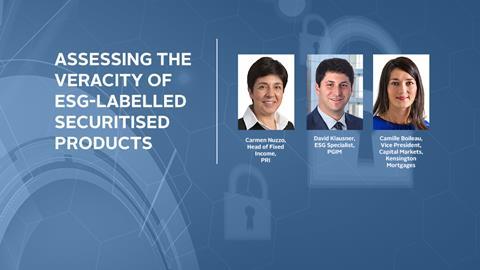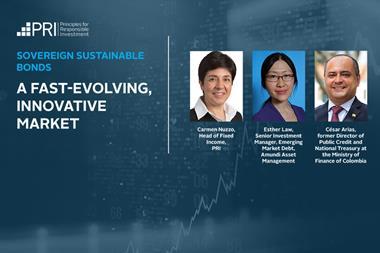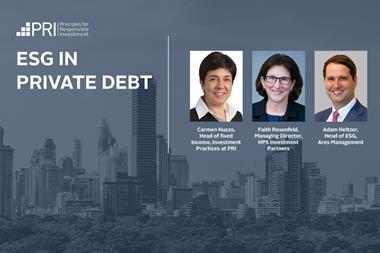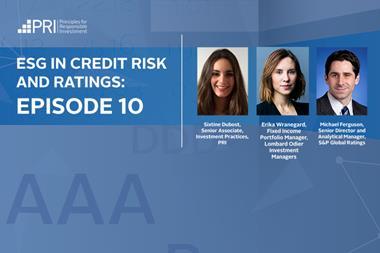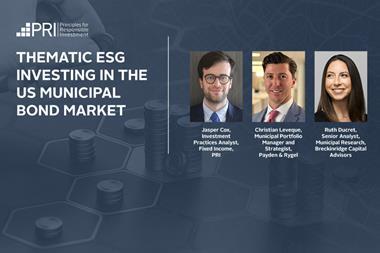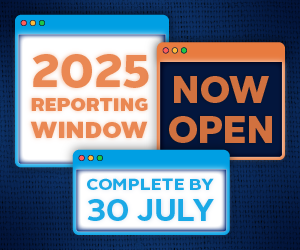Assessing the veracity of ESG-labelled securitised products
With Carmen Nuzzo, Head Of Fixed Income, Pri, Camille Boileau, Senior Vice President - Capital Markets, Kensington Mortgages And David Klausner, Esg Specialist, PGIM Fixed Income
Note: The Principles for Responsible Investment podcast is designed to be heard. If you are unable to do this, this transcript offers an insight into the episode.
Transcripts are generated using a combination of speech recognition software and human transcribers, and may contain the occasional error. Please check the corresponding audio before quoting in print.
Subscribe to the channel via Apple podcasts, Spotify, or wherever you listen to your podcasts.
Carmen Nuzzo
Since they first appeared in the market in 2016, when China issued the first green asset back security securitised products, which carry an ESG label products associated with a specific environmental, social, or governance purpose have grown rapidly. At present they include a large range of transactions that are broad by region and collateral type and have been issued in many more countries, including in Europe and in the US.
Carmen Nuzzo
My name is Carmen Nuzzo and I’m the Head of the Fixed Income program at the PRI to discuss with me today “What are the challenges when constructing and assessing these ESG labelled securitised products?” I’m joined by Camille Boileau, who is Senior Vice president capital markets at Kensington mortgages. Camille will provide her perspective as a UK non-bank lender specialist that has brought both the first social and green bond in the UK residential mortgage back securitised market also known as RMBS market. And I’m also joined by David Klausner ESG specialist at PGIM fixed income. He buys these products so he will provide the investor perspective. David is based in the US and also sits on the advisory committee to the PRI on securitised debt. Welcome Camille and David.
Camille Boileau
Thank you, Carmen. Happy to be here.
David Klausner
Hi, Carmen great to be here. Thank you!
Carmen Nuzzo
Camille, my first question is to you. Securitised products are complex even before considering those which carry an ESG label. In very simple terms, there are securities that are backed by a pool of assets. In most cases, loans and investors receive income generated by the underlying pool of assets with different degrees of risks. So ESG factors have to be considered at multiple levels. And when it comes to ESG labelled structure products, there are no standards to assess how genuine these labels are. So Camille comes into mortgages as issued both a social and a green residential mortgage back security in the span of just six months, what has prompted you to issue these products?
Camille Boileau
In February 2020, we launched our first range of environmentally friendly products with the eco back mortgage. That was the first green mortgage actually offered by a specialist mortgage lender in the UK. We realized that for example, 63% of UK homeowners plan to upgrade their properties in the next 10 years to save on their energy bills. We’ve also looked at that 40% of homeowners said that an energy performance certificate, which is called EPC is something which is a very important factor when they consider buying a home. Generally, in the UK housing is responsible for about 22% of the UK greenhouse carbon emissions. So that is a very high number. So, improving the energy efficiency of the UK stock was a priority. It’s a priority for the government. Therefore, it is a priority for lenders to kind of help homeowners to acquire some more environmentally friendly properties. So we launched these green products, rewarding borrows that improve the energy efficiency of their home by granting them like a thousand pound back.
Camille Boileau
This has brought quite a lot of interest generally from the investor community, the broker community in our markets. And we were seeing born investor showing more and more appetite for ESG assets and commitment to ESG investment. After the launch of this eco cash back product, we looked at how can we actually issue an ESG label transaction, which in residential mortgage back securities means a boom, which is collateralized by an ESG asset. This is what we call an ESG label transactions. What can be ESG for residential mortgage loans. That could be either loans that are linked to an underserved power community. And this is what we call social because they provide some social benefits to this community, or that can be environmental lending to properties that are good for the environment. Generally, the definition is property with an EPC rating of either A or B or properties where the borrower has made some refurbishments to improve the energy efficiency of the home.
Carmen Nuzzo
Thank you, Camille, for explaining so well how these social and green RMBS products work. David turning to you as an investor. What makes you buy a labelled securitised products versus a mainstream one?
David Klausner
Let me actually answer this in two parts first. What do we look for in a labelled issuance? And second, why we buying these bonds in our funds? You’ll probably hear me go back and forth between labelled bond and labelled issuance, but actually mean the same thing when I say those two terms. When we assess labelled bonds, I think the most important factor is that the pool of assets or loans needs to be fundamentally different than pools included in unlabelled issuances. This is important and I really wanna stress that even that is not really enough. So in addition to the pool being different, I think the key thing here is that the pool isn’t simply a repackaging where the issuer might let’s say take the most environmentally or the most socially forward assets or loans, and just separate them out into a labelled bond. What we’re really looking for is that the issuer is using this issuance and, and the proceeds from it to launch a new product, to fund a new asset, or really to fundamentally change the business model to become more sustainable.
David Klausner
And this is the concept of additionality, something that you’ll probably hear me talk about all throughout this podcast. It’s really this concept of additionality, that’s the key thing that we’re looking for in a labelled bond. In terms of why we buy these bonds? I think the simple answer is just that, that we’re seeing increasing demand from our clients, particularly for portfolios that have a certain sleeve or certain share of these labelled bonds. And this is particularly true in Europe, but I think we’ll start to see this more and more in the US as well. But I think what’s actually more useful here is to talk about what I would call the philosophical argument for why we buy these bonds. The goal in our ESG funds is to try to create as much impact as we can given the constraints that we face as a fiduciary. By emphasizing this concept of additionality, these bonds are actually very useful for us in first helping to identify and second ultimately fund issuers that are transitioning their business model. In other words, companies that might have a poor ESG performance today, but that have both a credible plan and really the motivation to transition their business model moving forward.
Carmen Nuzzo
Going back to your point about concrete examples, I said earlier that this market segment is new, although is growing very rapidly. What good practice looks like? What have you seen so far?
David Klausner
So for this, I’m going to focus on the, the asset back security or ABS market in my answer here. And if I’m being perfectly honest and I, I swear, I’m not trying to be overly cynical. We’re overly critical here, but I’d say we really haven’t come across any deals in the ABS space here in the US that I would say are the gold standard since Carmen, as you rightly pointed out, the market is just still so new. So we actually saw our first high yield social deal earlier this year. And while it was definitely a step in the right direction, I think there were a few best practices that we would’ve hoped to have seen and that we really hoped get adopted as this market evolves. So to dive into this one specific deal, this issuance was focused on providing consumer credit for underserved areas, specifically looking at borrowers with either low credit scores or lower incomes.
David Klausner
And there’s actually a particular focus on women and minority borrowers. This issuer already had a very high ESG impact rating in our framework, but when it came to this very specific labelled bond, we just felt that it didn’t generate as much additionality as we would’ve hoped for. And this is really because of two reasons. First, the customers being targeted were still undergoing the same underwriting process as other customers. And second, the overall population of the pool performed almost identically to the broader pool of loans. Given the fact that the issuers existing business model had already been focusing on lower income and lower credit customers. I think there are a few ways that the steel could have really reached the gold standard. So first imagine if the issuer here had offered financial literacy training to the population being served by the proceeds of this bond, this could have ultimately helped lower default rates and really broadened that customer pool above and beyond their business as usual.
David Klausner
Another example here might have been if the issuer were to say track the impact of these loans on customers credit ratings, and this would help show that these loans actually improved borrowers overall access to financing over the long term. One last example here might have been if the issuer used some sort of alternative underwriting process for this very specific pool to allow for, you know, more flexibility in the lending practices, which again could have helped broaden that customer pool. I think these types of provisions would exhibit quite a bit of additionality because they would’ve either offered a new type of social product for this issuer or they would’ve broadened that pool of customers that the issuers serving. I do want to add a bit of a word of caution here. It’s easy to say that you’re issuing a social bond if you increase the borrower pool to once again include lower income or lower credit borrowers.
David Klausner
But I think it’s really important that that does not come at the expense of consumer protection. If we had looked at all of the subprime mortgage lending that was going on prior to the housing crisis in the US back in 2008, we could have easily said that those mortgages promoted social goals, because at the end of the day, they did improve access to mortgage financing. Of course, we all know how that turned out. And many of those low-income borrowers ended up losing their homes and many lost really their entire life savings. I’d really encourage market participants here to not only look at how can we expand access through these social bonds, but also focus on what protections those lower income or lower credit customers have built into these products.
Camille Boileau
And David actually, I kind of echo exactly what you’re saying because when we decided to originate a green boom, generally the market coming from like asset back securities, where expecting that the pool will be green, day one. So basically, I’m issuing a boom, which is collateralized by green assets. And again, being green assets, being home with, very good standards of energy efficiency. But if you’re looking particularly in the UK, what are, what are the green assets there are like generally new built? Um, the majority of the market is, as I mentioned at the beginning of this podcast, like very energy inefficient because there are whole houses that have been built and they haven’t been refurbished to the highest standards when it comes to the environment. So, what is actually green? Green are like new build 80, 80 to 85% of the new, big in the UK are green just because they are being made with the latest materials they are.
Camille Boileau
Um, they have like, they are, they are very well insulated. Um, they are, they have, um, some solar panels being installed on the roof, et cetera, which are things obviously that didn’t exist like back in like almost like 10 to 15 years ago, which is when like the entire stock of the UK was built. So if you, if you issue a green boom backed by a hundred percent of green assets, you are going to end up with a very high risk credit profile in terms of borrowers with like very high health TVs, help to buy, uh, higher proportion of new bill, which generally tend to be sold in the UK market at a premium larger balance because they’re more expensive because they are new builds. I proportional flats cause like new build generally are flats. While if you actually use the user approach where you raise a green boom and you commit in the next year to invest these green proceeds to the origination of green assets, you continue to have exposure to a mass tender presidential pool of loan with a mixture of EPC rating.
Camille Boileau
So it actually made more sense, um, in the UK to use the use of proceed approach versus, uh, what we call the standout approach for ABS, which is to have like a, to have a collateral of green assets. And this is something that has been challenged, uh, quite a lot. When we issued our first green bond by investors, they were actually questioning why we didn’t, um, collateralize the pool by green assets because they didn’t realize that actually green buildings were coming with this type of concentration, which actually would have made them carry like a higher risk in terms of the assets that they were buying.
David Klausner
I’m very happy to hear that you’re thinking about this because I do think it’s a really important point. I certainly applaud you for doing that.
Carmen Nuzzo
Camille I’m really grateful that you brought up this point about the use of proceeds. This is at the very heart of a recent report that the European banking authority has published. And it’s a point that is very much debated in continental Europe.
Camille Boileau
The good thing is in the UK, the IKMA really is a new adjustment to its social and green principle. One of the objective of these amendments, where actually for the principles to be marked and fit for purpose when it comes to securitization, which is something that generally the market was expecting because there was kind of a lack of standardised framework when it comes to securitization versus like the car bond market that David, you mentioned at the beginning of this podcast and the new language clarify that two methods can actually be used when it comes to proceeds from a green or social securitization. The first one being the pool being defined day one as green or social, this is what we call a secure green or social collateral. Boom are the sub method being where the use of proceeds can be applied outside of the collateral pool. I think that may also include some assets within the collateral pool day one. And this is what they call, uh, secured green social stand-up bonds. The good thing is when we issued green transactions about a year ago, the framework was not clear. And a year later that just published this new adjustments last month actually approved these two pharma methods, which means that our social boom, which was issued using method one and our green boom, which was issued using method two approved and validated by IKMA.
Carmen Nuzzo
David earlier mentioned some good examples, with some limits that is beginning to see in the market, which is fast evolving when you package these products, where do you find the necessary data to put them together?
Camille Boileau
So when it comes to RMBS, we’re taking properties, um, what is ESG when it comes to properties? It’s it cannot be like a lot of hub measurable metrics. The most important one is the EPC. So, the energy performance certificate of the property, which is a report, which is mandatory since, uh, 2007, when there is a sale transaction, which means that a lot of property in the UK do not bear an EP rating yet because they haven’t been sold or they’ve been purchased before 07. But now, we are seeing more and more EPC being lodged, uh, with recent sale transactions and carbon emissions. So, if you’re looking at this EPC, um, data, this EPC report, uh, there is like a carbon emissions number, which obviously depends on the flow area of the flats. Obviously doesn’t take into accounts.
Unfortunately whether you have like you have family of four or family of two, which means that it’s just like an estimate of what do we think is the total amount, like the total turn of carbons being emitted every year based on the region that you’re living in and based on the floor area of, of the properties.
Camille Boileau
So EPC are when we can select whether property is green or it’s not green. The key things I would like to add here is in the UK, A and B that maybe 10% of the UK housing stock. So that is very small. We are seeing more and more A and B as we are seeing more and more properties being, um, built, but the remaining 90%, which is quite energy and efficient is qualified as non-green in the UK, but we still need to do something about it. So it would be great to see more developments around the definition of what is a green assets when it comes to this remaining 90%, just to give you an example, like if you have a property, which as an EPC of D, which is like the average in the UK, but you decide to install some solar panel or you decide to insert some double glazing, are you doing like some works and the insulation of your property, or installing like a heat pump, for example, then from being a D you could become a B, and we should see, and hopefully we are going to see more and more lender to kind of lend to this type of properties, offering them some cash back or some better rates when a property has been improved from an energy efficiency point, and hopefully these properties should qualify as green in the future.
Camille Boileau
We have in Kensington when we did a green bond, it was the first from, uh, the first green ABS bond in the UK. So we wanted to have the definition of green, very simple. So we decided to kind of stop it at just A and B. But going forward, hopefully we are going to see more developments around this definition, and we should see some developments on how to include these properties, which got like an improved EPC grade after some refurbishments.
David Klausner
You know, I think it’s very important for us as investors to be able to monitor these deals on an ongoing basis. So can you tell me a little bit about how you track them after the deal is issued?
Camille Boileau
The good thing is that in the UK, there is a public database where you can source all of the EPC. If the property has had an EPC, then publicly, you can find by just putting the full address and the full postcode, you can find the EPC of this property. This public database is updated every month. If a property used to be a D and there’s been a new inspection and not a property is a B, you are going to see like a B in the database. We are using a set party provider to source this EPC data for us. And we publish that on our website. We don’t publish it only for the green booms, but we publish it for any loans that is, or has been collateralised as part of any of our transaction, whether ESG label, transaction, or non ESG label transaction, each loan ID is unique when it comes to our loans.
Camille Boileau
So what is quite important is to ensure that we don’t content assets, and this is something that actually IKMA reinforced with their new adjustments recently. If I issued green, boom, which is collateralized say by green asset day one, I have like a hundred percent of like green loans with like their unique loan ID. If tomorrow I am doing another green transaction, I just can’t use the proceeds that I raised from this green transaction to support the origination of green loans that were already part as green assets of a previous RMBS. We publish a big Excel with all of the loan ID that we attribute to a certain ESG label transaction. So if tomorrow we do a certain green transaction as an investor, you’d be able to see that there’s no double counting between the two loans and between the two bonds at Kensington. For example, we just started to collect this data at the point of origination.
Camille Boileau
So when a broker submitted the application, one of the documents that we know require is EPC inspection report. So we can input it in some database when it comes to publishing information around EPC, publicly to, to investors. And hopefully we are going to see more and more lenders doing that. We know that this is quite important for you as an investor to assess the ESG attributes of transaction. And you can do that in the RMBS market specifically by assessing the EPC of the properties that is collateralizing your transaction. As you mentioned, David, whether this is an ESG label transaction or not an ESG label transaction, because if it’s not an ESG label transaction, you still want to have this data to see where is this lender originated? I think this is very important for you to perceive this data.
David Klausner
It’s encouraging to hear that.
Carmen Nuzzo
I said at the beginning of the podcast, that these are very complex instruments. That’s why transparency is very key and crucial. They are difficult to put together and to analyse as an investor, but also very important to channel capital, to borrowers, whether on the corporate side or on an individual side, that otherwise will be deprived from access to capital. We’re turning to the end of this podcast. I would like to ask you both. We’ve seen quite a lot of dynamism, even if this market is fairly new, what are your expectations on how the market is going to evolve going forward?
Camille Boileau
I’m going start answering this one. Cameron global sustainable issuances have grown significantly in the last 10 years, and they are projected to continue to surge. If we’re just looking at like 2020 versus 2021, the numbers has increased by two. So we have seen two times more ESG the versus like 2020. We’ve seen like some positive development in the abs market with the two bonds Kensington brought to the market. And this has been followed by like other issues. There still be quite a limited supply of ESG labelled RMBS transaction in Europe. And I believe that a cap trap is necessary, especially to the bond cap rate market, which definitely has been more developed. I think, standardization and transparency are the path forward, we are lacking of standardised frameworks in the UK. It’s been recently a little bit better with the latest adjustments from IKMA, but generally, you know, there’s some gaps at the firm level disclosure.
Camille Boileau
Like as a firm, what can you disclose when it comes to ESG? There is no specific questionnaire that you need to fill into. So, everyone is promoting what they’re doing in terms of ESG, but no one is following a certain pass, which makes it quite difficult for investor to actually assess ESG at the firm level and at the boom level of securitization. We believe that development of standardized framework will play an important role in driving forward buzz issues of ESG label transaction, but also the demands from, from investors, a way forward for insurers to be more incentivized as well to issue ESG label transactions would be potentially to do some professional capital treatments, as we’ve seen for SDS, for example, which provide cheaper funding for banks. And when it comes to the investor side, I think something that we’ve recently seen in our transaction is what if the issuer do not allocate the green, uh, the social proceeds, like there is no financial penalty for that at the moment, there is no penalty for not allocated the green or social bond proceeds beyond the reputational risk. So that could be as well way forward. And, and again, like combining everything, I think we are talking about like standardisation, like one rule for everyone when it comes to, to ESG.
Carmen Nuzzo
What about you, David? I mean, would be interested in, in hearing your view there.
David Klausner
I’ll definitely echo a lot of what you said and just to pick up on the last thing that you were saying, even in the sustainability linked bond market, where there is a financial penalty for not reaching certain goals, the penalties today are in many cases, just too small to really have an impact. I definitely agree that there has to be a greater financial impact for failing to meet the use of proceeds or the sustainability linked bond structure. I think one of the things that is worth talking about is this pricing differential. If you look right now at the market, especially here in the us, we’re not really seeing a broad, what I’ll call greenium at the moment across the entire market. There definitely are some pockets of pricing differentials depending on the quality of the labelled issue. And so then depending on the portfolio or investor objectives, backing that deal, and this today is driven by the fact that there’s growing demand, chasing very few high quality deals looking forward.
David Klausner
I might have a bit of a contrarian view here, but I actually think that as a growing number of high-quality issue come to market investors will actually be increasingly unlikely to accept the haircut. And this is because most investors, even ESG oriented ones are still striving to meet alpha targets that match their non ESG funds are only marginally lower. And this really does make it very difficult for us to accept materially lower returns on these types of products as the market matures and the supply of these high-quality labels, bonds increase. It’s likely that even with growing demand, that these pockets of pricing differentials between labelled and unlabelled is actually going to go away. This isn’t to suggest that issuers shouldn’t be thinking about labelled bonds, because even though I don’t necessarily think that there might be any sort of big pricing benefit anytime soon, I think these labelled issues will help issuers to increase their investor base. And this is especially important for actually something I was talking about before for companies that might be early on in their transition to a more sustainable, uh, business model. There are an increasing number of ESG mandates out there. So I think the investor base is clearly going to grow here.
Carmen Nuzzo
Okay, David, I’m going stop you there. We could go on for another hour because this is a super interesting new topic, and we haven’t even indulged so much on regional differences, which are so many and so important as well. Thank you, Camille and David for joining me today, a reminder that this podcast is organized as part of the PRI securitised debt work stream to remain up to date about the next steps, please visit www.unpri.org/securitized-debt or the generic fixed income PRI page, which is www.unpri.org/fi, where you will find more resources. Thanks for listening. And don’t forget to tune in for our next podcast until then goodbye.
Find the podcast transcript here
Downloads
Transcript - securitsed products
PDF, Size 0.19 mb


